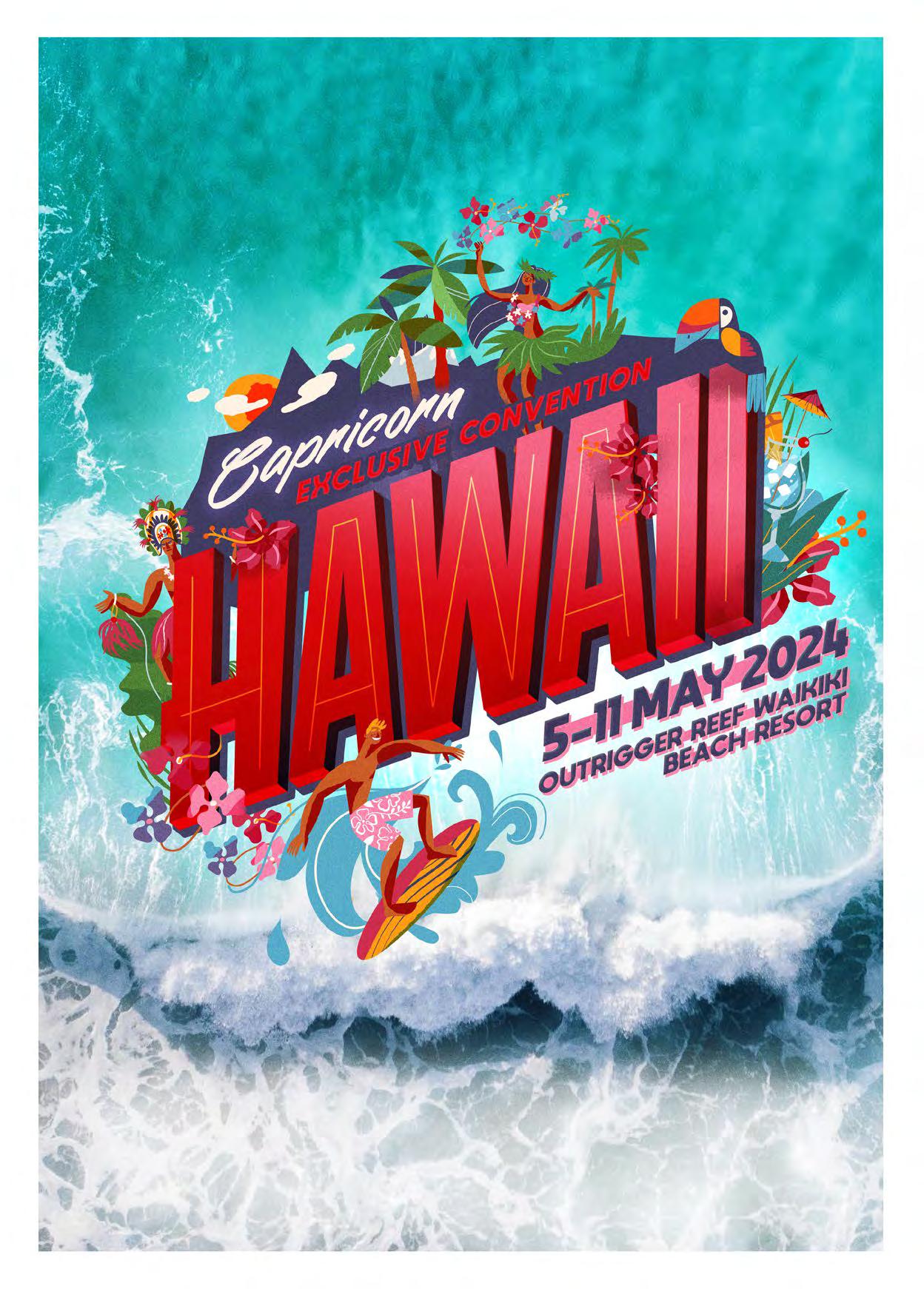2023
WINNER RISING STARS CAPRICORN

FUTURE RIDE:
HYPERION XP-1
Powered by H2 ohhhhhh!!!

DRIVERLESS CARS
Are autonomous cars really the way of the future?





HYPERION XP-1
Powered by H2 ohhhhhh!!!

Are autonomous cars really the way of the future?



Change is inevitable—and we are living in a time of incredible change.
In 2016, Klaus Schwab, the founder of the World Economic Forum, suggested the world was at the beginning of the Fourth Industrial Revolution. He explained we were entering a new era, one that “builds and extends on the impact of the digitisation of our lives in new and unanticipated ways”.
In recent months, since the launch of the artificial intelligence platform ChatGPT, the impact and potential of this Fourth Industrial Revolution has begun to feel more tangible. Lots of people in lots of industries are suddenly concerned about the impact that AI will have on their jobs and businesses. For many, the future seems less certain than it did before this powerful new tool was released. We’ve all become a lot more conscious of the potential disruptive impact of AI on how we live our lives and earn our livings.
Of course, in the automotive industry, we’ve been dealing with disruption for a long time. Our industry was a part of the First Industrial Revolution (the shift from using animals to using machines) and has continued to evolve through the other two of Schwab’s identified revolutions (breakthroughs in power generation in the first half of the last century, and in communication and computing in the second half).
But, like the many industries coming to grips with the potential impacts of AI, the automotive industry feels like it stands on the precipice of major, disruptive change. For the first time since stables and farriers gave way to automotive workshops, it really feels like the next generation of businesses in our industry, and the skills required to operate and work in them, will look very different to what we’ve been used to.
But this change isn’t necessarily something to be afraid of. It holds a huge amount of excitement and opportunity for those that are willing to embrace it in the right way.
In this month’s Ignition, we’re looking at the next generation. You’ll meet our Rising Star winner and read her story. We’ve got articles on self-driving cars and whether they’re really the way ahead and our Future Ride is a hydrogenpowered car—a possible alternative to the electric vehicle pathway we’re constantly told is the future. We’ve also got an article on engaging with online reviews, which is important for attracting the next generation of customers—who are researching online before they’re driving into your workshop.
While the future is always uncertain, there’s plenty we can do to make it less daunting, even in the face of major disruption. While change is inevitable, the pace of change is not. We have time to prepare. Whatever the future looks like, Capricorn will be right there alongside you—because we’re stronger together.
David Fraser Group CEO
Ignition.

AUGUST 2023
FEBRUARY 2023
4 MANAGE TRADE ACCOUNT PAYMENTS ONLINE WITH myCAP
Things just got easier and more convenient!
6 THE AUSTRALIAN FEDERAL BUDGET 2023-24
What it means for you.
8 THE NEXT-GENERATION WORKSHOP
What skills will you need to thrive in a high-tech future?
10 AUTOCARE RESOUNDING INDUSTRY SUCCESS

A truly remarkable trade show.

14 ENGAGING WITH ONLINE REVIEWS
Why they’re important for attracting the next generation of customers.
17 2023 CAPRICORN RISING STARS WINNER
Meet Chelsea Bowers.
20 FUTURE RIDE: HYPERION XP-1
Powered by H2 ohhhhhh!!!
24 DRIVERLESS CARS
Are autonomous cars really the way of the future?
29 FERRARI’S EPIC 24H LE MANS
The prancing horse claims victory again after 58 years.

At Capricorn, we’re all about empowering our Members and making their lives easier and more convenient. That’s why we’re excited to announce that you can now manage the payment methods for your Trade Account online through myCAP.
This means you now have the freedom to do so 24 hours a day, 7 days a week. Whether you’re making a one-off card payment or managing your direct debit details, it’s all at your fingertips to manage according to your own schedule.
We know that most Members prefer to settle their Trade Account using some form of direct debit, be that linked to a bank account or credit/debit card.
myCAP’s new online payment management capabilities mean that Members now have the ability to:
Set up a new direct debit payment (via bank account or credit/debit card).
Change the payment details for an existing direct debit (via bank account or credit/debit card).

It’s the easiest way to make sure that you never miss a payment.
If you’d like to make a one-off card payment to settle your Trade Account, our new online payment system has you covered. All you need to do is select the “One-Off Card Payment” option and enter your card details.
There are a couple of ways to access the payments page in myCAP.


You can select the “Payments” tab from the main navigation bar at the top of the screen.
Alternatively, you can also select the “Account” tab in the top right corner. And then select the “Payments” option in the drop-down menu.
Once you’ve reached the payments page, just follow the prompts to manage your payments as (and when) you need to. It really is that simple!


The federal budget was delivered in May with a theme of ‘security, prosperity and growth’.

Treasurer Jim Chalmers outlined his plan to reduce inflation, keep economic growth on track and address some of the most challenging cost-of-living issues for the unemployed and for low-income households.

While the number of initiatives for small to medium-sized businesses was minimal, there were some that may be of benefit to Members.
There are plans to extend the small business $20,000 instant asset write-off by one more year to 30 June 2024.
The proposed Small Business Energy Incentive would provide a 20% bonus tax deduction (to a maximum of $20,000) to support investments in power-saving assets such as more efficient fridges, battery systems, heat pumps and electric heating and cooling. This would be made available to businesses with a turnover of less than $50M which have the eligible investment installed and ready for use between 1 July 2023 and 30 June 2024, with limits on the total amount claimed by a business.
We know from our State of the Nation 2022 research that the skills shortage has had a huge impact on Members. It also told us that more and more of you are taking on apprentices to help address this issue.
However, it’s alarming to note that the number of Australians completing a trade apprenticeship per year has fallen from 57,000 to around 37,000 between 2012 and 2021.
A new proposed model for delivering non-financial apprentice support aims to improve the quality (and thus increase the completion rate) of apprenticeships by:

1. Providing every apprentice with a structured assessment on commencement.
2. Enhanced mentoring services to enable earlier access to support.
3. Providing more proactive support to apprentices over the course of their apprenticeship.
Exact details on how businesses and apprentices can access this support have yet to be released.
If you’re interested in taking advantage of any of the initiatives outlined in this article, please refer to the ATO or Australian Apprenticeships websites or speak to your accountant for further advice.

Many experts are making predictions about what the aftermarket sector will look like in five or ten years, but like the rest of us they are only guessing. But everyone is talking about it, because whatever happens, there will be some kind of impact on those in business today or planning to open a workshop any time soon.
My role in the industry as a workshop operator, trainer and technical information provider demands that I try to predict the future. I have to admit I don’t know for sure — but I have my thoughts.
I have confessed in past Ignition articles that in my own business I like to think five years ahead, and thanks to my positive outlook about the future of aftermarket businesses, I have survived quite well.
Probably the new direction in everyone’s mind right now has to do with electric vehicles (EV). Despite the fact that some governments have mandated a phase-out of internal combustion engines (ICE) as early as 2030, issues relating to sourcing the rare minerals required for batteries and slow delivery of charging facilities are slowing down the uptake of EVs by the general population.
My view is that the transition to EVs, in whatever form it takes, is going to be slower than expected, but it will happen eventually. The development of electric vehicle technology is far from over. Proof of this is the recent
announcement that General Motors will end production of its bestselling Chevrolet Bolt electric car by the end of this year and will turn to electric pickup trucks. This is merely an indication that electric vehicle technology will continue to change and improve over time.
This leads to the conclusion that ICE-powered vehicles are going to be around for a long time yet, but finding the talent to diagnose and repair these vehicles is going to get a lot harder. There is already a skills shortage in the auto aftermarket, and it will get worse, maybe even lasting until the very end of ICE vehicles.
Trying to find a competent ICE technician in the near future will be like trying to find a good carburettor rebuilder in 2023. An exodus of retirees from long-established aftermarket workshops, expected in the next five years, is only going to make the skill shortage worse for those still in the trade.
Despite these issues, I have a very positive outlook on the future for everyone, and the aftermarket growth potential over the next five years is as promising as it has ever been.
The big question remains. What do business owners need to consider for their own survival, and how can they ensure that the changes being made right now are the right ones?
If the march of technology in the automotive industry over the past decade or so has told us anything, it is that forecasting the future is a pretty risky business.
One thing is certain, the industry is going to be very high-tech. It will need smart technicians able to service, diagnose and repair vehicles that are being sold today. Special skills will be needed in electronics, software programming, ADAS recalibration, and high-voltage electric vehicle diagnosis. Such skills are certainties, so it makes sense for workshop owners and managers to start learning them right now.
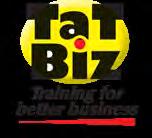
For my workshop, I have embarked on my next five-year journey to specialise in electric and hybrid technologies, to add to servicing, diagnosing and repairing regular ICE vehicles. This is not the first time I have undertaken such dramatic action. About 30 years ago, my five-year plan included mobile air conditioning and HVAC systems. A decade later I chose EFI and engine management, and ten years ago I adopted a program of customerfocused service levels covering the full range of automotive care.
Being able to adapt to changes in technologies and market forces over the past 40 years has enabled my workshop to stay ahead of the game — I aim to never be in catch-up mode. Having chosen electric and hybrid specialty services for the next five years takes me back to my roots. I began my time in this trade as a freshfaced 16-year-old apprentice auto electrician. It seemed logical to see out my working life in the same role, as an auto electrician. If nothing else, my experience is a lesson in using your inherent skills to help choose the right direction for your workshop.

My electric journey began years ago with my purchase of a hybrid vehicle, followed by a fully electric vehicle — the Nissan Leaf. My workshop now has two electric vehicles and two hybrids in its loan fleet. It wasn’t long after hanging my new competency certificates on the waiting room wall that repair work poured in. To help spread the word, the workshop spent $500 on a run-down Toyota Prius, restored it to health and adorned it with messages about our electric and hybrid services.
The decisions I made won’t suit everyone, and besides, there are so many opportunities for special skills development now available. Here are just a few.
Driver Assistance Systems (ADAS): Recalibration of a radar, cameras and sensors, a skill needed after an accident, windscreen replacement or even the replacement of a side mirror.
Thermal management: Overall thermal management of late model vehicles, including full electric and hybrids. Specialised management of HVAC components and the complex cabin climate systems is going to be a long-term growth area and will need advanced skills.
ECU programming and recoding: Another long-term growth area because replaced control units, new or used, genuine or aftermarket, will need programming to link them into the vehicle’s electronic systems.
Key programming and immobilisation: A specialised skill set will be needed because this area includes telematics and vehicle external communication.
Gasoline injector testing and servicing: These skills would cover GDi, FSi and SiDi to name just a few.
There are so many choices for future directions. Some workshops may decide to focus only on current technologies because there is no doubt that low and ultra-low-emission vehicles will need quality service, diagnostics and repair for more than another decade.
Whatever decision you make, make sure you are where you want to be in five to 10 years’ time. The future is looking good for those who plot their course.


Autocare, proudly sponsored by mycar Tyre & Auto, took place on the 9th and 10th of June and saw thousands of technicians, apprentices and workshop managers from across Australia descend on the Brisbane Convention & Exhibition Centre to learn, grow their careers and invest in their future business success.
“Autocare has been a resounding success and is a testament to our incredible industry. We brought together the best trainers, developed a programme of the most in-demand topics and built an impressive trade show with Australia’s best brands. The success of Autocare has shown the important role the event has to promote and foster the future of our most valuable resource, our people,” said Stuart Charity, CEO of the Australian Automotive Aftermarket Association (AAAA).
“The event was buzzing, there was a positive atmosphere and it was so great to see everyone come together and celebrate our industry.”
“Our delegates will take the valuable learnings from Autocare and apply that to their own business and their work servicing and repairing vehicles, and it arms them with the knowledge to be prepared for the future,” Stuart said.
The Workshop Management sessions sponsored by Repco Authorised Service gave attendees the latest information and advice on how to increase their workshop efficiency, sustainability and profitability. Sessions covered the
future of the aftermarket, the race to find and keep top talent, emerging vehicle technology opportunities, relationship building, customer service excellence, digital marketing, cybersecurity, mastering difficult conversations, business planning and environmental sustainability.

Renowned U.S diagnostics expert Brandon Steckler headlined a list of Australia’s best local trainers for the comprehensive Technical Training program sponsored by Auto Tech. The program of sessions gave technicians new techniques to efficiently diagnose, service and repair the latest vehicles and prepared them for the EV future. Topics included hybrid and EV servicing, Pass-Thru technology, EV safety, high-voltage battery management, oscilloscopes, EGR systems, fuel injection systems, exhaust aftertreatment, dieselspecific diagnostics and more.
Free to those in the automotive trade, the incredible Autocare Trade Show was a perfect complement to the training programs. Visitors experienced the latest tools, technology, equipment, and services, showcased by 100 of the best brands in the country. Free training sessions on the Training Stage, sponsored by Marlin Tyre & Mechanical Workshop Software, provided trade show visitors valuable information covering topics related to both workshop management and technical training.
Networking was another central component of Autocare. Delegates enjoyed daily lunches sponsored by Warren & Brown Tools, and on Friday night the Networking Happy
Hour event sponsored by SmartPay offered another fantastic chance to make new contacts and do business.
A new initiative at Autocare for 2023 was the inaugural National Light Vehicle Modification Summit. The Summit, sponsored by Anstel, was sold out and was a groundbreaking event for the vehicle modification industry. The event attracted vehicle modifiers from across the country, who came together to collaborate and influence national vehicle standards.
“On behalf of the AAAA, I’d like to thank our event sponsors, exhibitors, our incredible speakers and most importantly everyone who attended Autocare and made it an event to remember. Bring on 2025!” said Stuart Charity.

They won the $1,000 Capricorn Travel voucher for signing up for the Audodata Diagnostic & Repairs Package and a Wish Card for visiting our stand at Autocare 2023.

Autocare 2023 has delivered on its promise of being Australia’s largest automotive training event, with huge crowds, world-class training and a spectacular trade show.
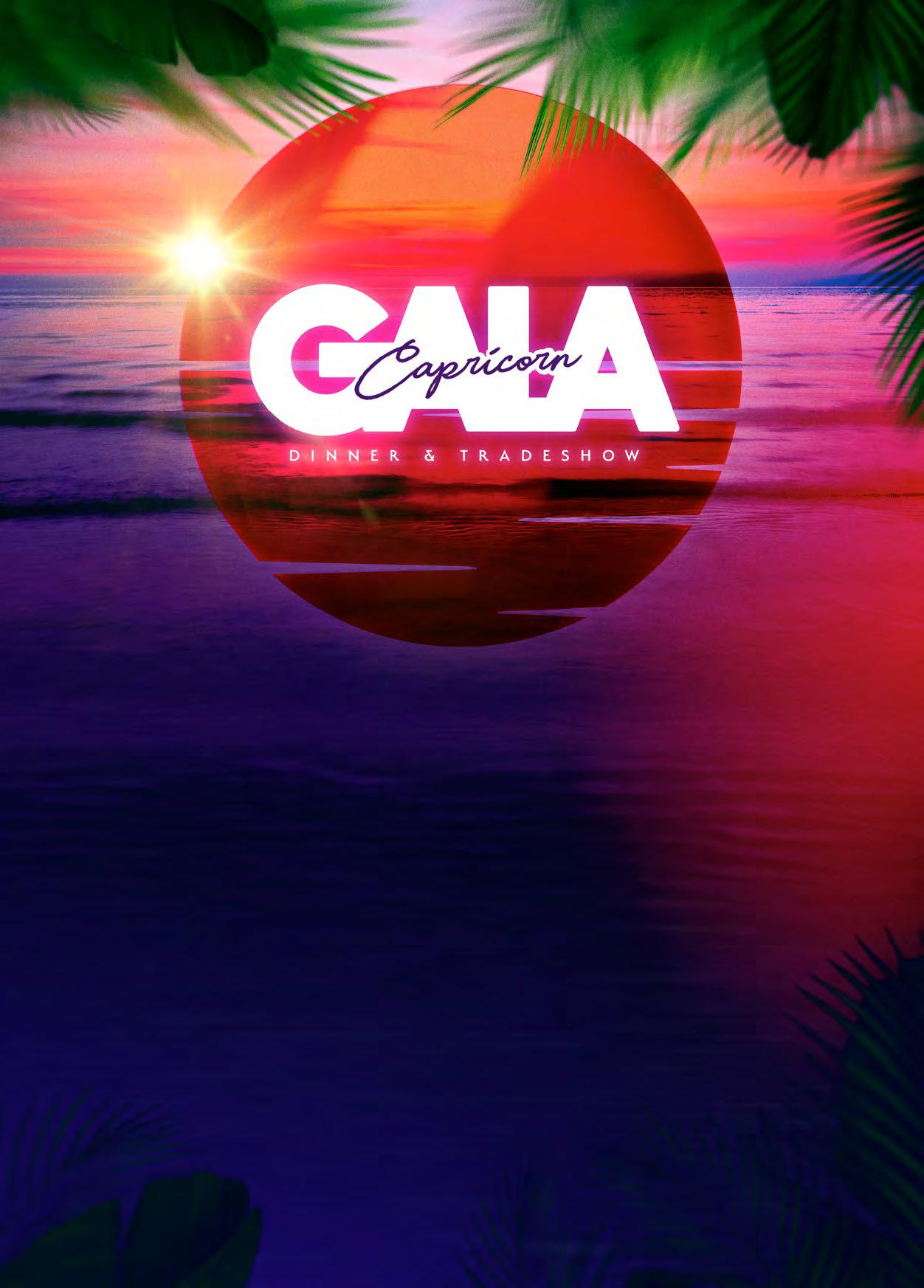





Why they’re important for attracting the next generation of customers.

More than threequarters of consumers say they regularly read online reviews when browsing for local businesses.
That’s according to a study by BrightLocal, a UK-based global reputation management company, which has been regularly studying the impact of online reviews since 2010.
Their latest research also found 87% of consumers use Google to evaluate a local business. That’s especially true for automotive businesses. When consumers were asked which kinds of businesses they were most likely to read reviews on before engaging a company, automotive industry businesses came second only to healthcare providers.
So, there’s little doubt online reviews are an important part of the modern business landscape, whether we like it or not.
BrightLocal found Google is the most trusted platform for reviews, while Facebook’s relevance for reviews is continuing to fall. It’s worth noting Facebook replaced reviews with recommendations which, rather than offering a rating out of five, ask consumers to say yes or no when asked if they would recommend the business. Facebook then aggregates a score, based on the total recommendations. Other popular review sites are Yelp and Trustpilot.
Wherever reviews are being left, it’s critical that workshop owners and managers monitor them and engage with them—ideally responding in less than a week.

While we know from our State of the Nation surveys that Capricorn Members consistently say 75% of their business comes through word of mouth, BrightLocal found 46% of consumers feel online reviews are as trustworthy as personal recommendations from friends and family.
Here’s why online reviews matter:
Social proof: Reviews (even bad ones, if you respond to them well) build trust and credibility with potential customers.
Insights: Review feedback can help you identify problem areas you might not have been aware of, so you can make improvements.
Engagement: Responding to reviews is an opportunity to thank customers and reinforce your values, customer service style and much more.
Free content: Leverage positive reviews in social media posts, newsletters and testimonials on your website to spread the message even further.
Responding to positive reviews is an opportunity to thank the customer, publicly, for writing a review. That’s not just good manners, it’s smart business: others will read the love-in and feel positive about your business. Responding to negative reviews can be harder, but it is no less essential. How you handle it can change everything.
Investigate:
Before you respond, look into the substance of the complaint with your team to get to the bottom of what happened.
Respond ASAP:
Don’t leave bad reviews hanging out there, unanswered. It might be costing you customers!
Stay professional: Don’t get personal. Keep it courteous, but be authentic in your response.
Acknowledge:
Always recognise that the person feels they had a sub-par experience. Be honest about any mistakes and explain your plans to remedy the situation.
Apologise: You may have nothing to apologise for, but at least show compassion and empathy.
Next steps:
Whether you invite the customer to give you a call or promise to call them yourself, make it clear you’re happy to talk about the situation to find a satisfactory resolution.
Accountability:
Sign off with your name and title. It shows you’re taking the situation seriously and not running away from it.


Capricorn Rewards has all the must have products to enhance your viewing experience. Whether you are watching from the sidelines or from the comfort of your own home, Capricorn Rewards has the products that will make your experience unforgettable.
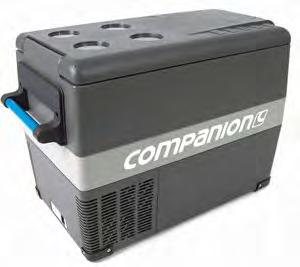





The Capricorn Rising Stars is awarded to an apprentice who shows initiative in the workshop, eagerness to learn and a commitment to the automotive aftermarket industry.
Chelsea was chosen from among over 600 nominees this year and you might even remember seeing her face previously in the Top 5 Finalists of the 2022 Capricorn Rising Stars.
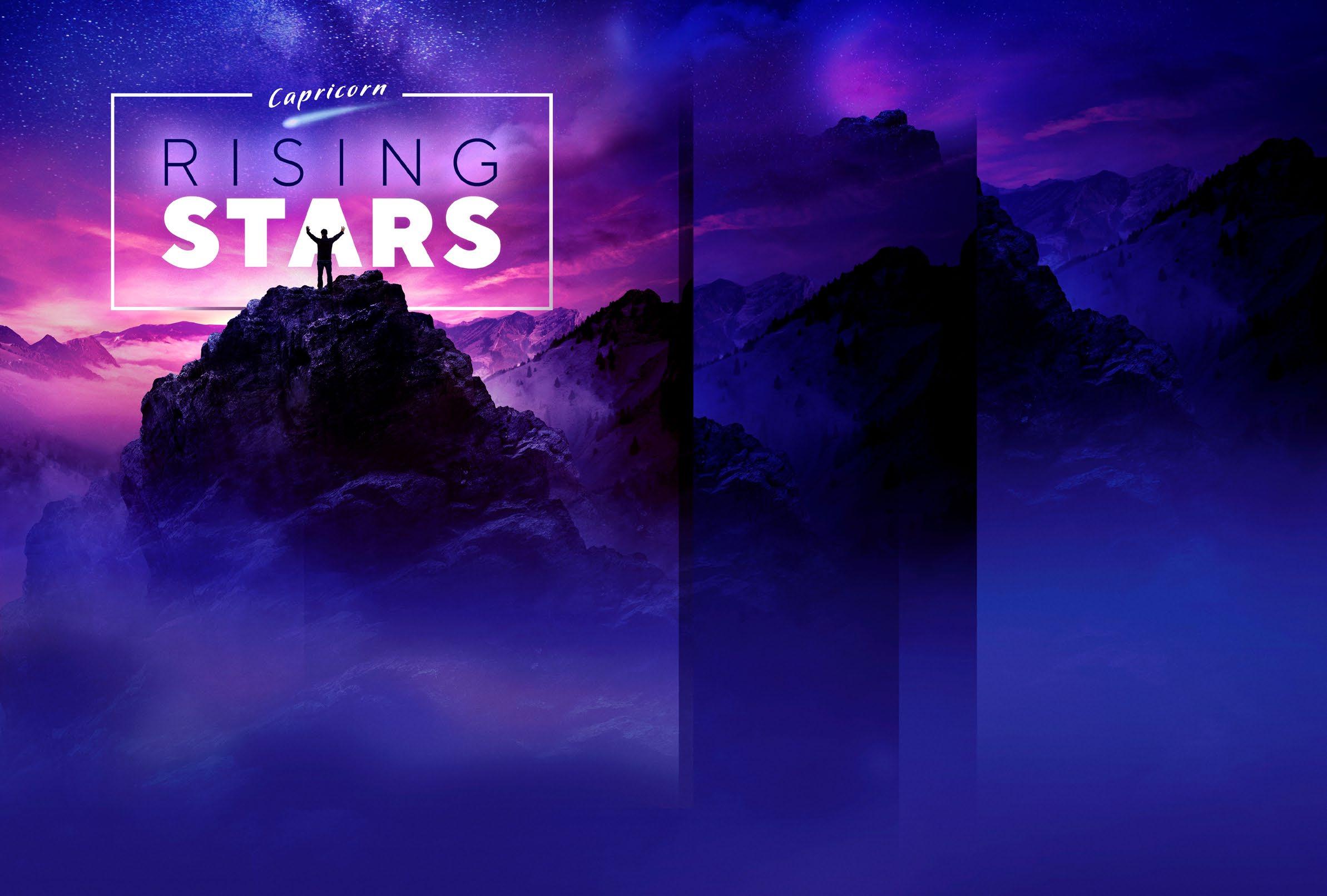
“I feel like I’m a part of something that the younger me would have been really proud of,” Chelsea said of her win. “It really blew me away. One of the people I really look up to in this industry, Gabby Clift, won it in 2020, so I feel like I’m standing on the podium with her and I feel very lucky to be there with her.”
The Capricorn Rising Stars awards have been running for six years and have been won by three male and three female apprentices—a fact not lost on Chelsea. In the March edition of Ignition magazine, she shared with Capricorn Members her story of trying to get her start in the industry as a female apprentice. She explained that the workshop where she started her apprenticeship had not been
supportive, had a negative culture and had her washing cars instead of servicing them. She left, went to university but didn’t enjoy it, then decided to finish her apprenticeship, finding a far more supportive workplace in John Edwards Automotive.

“It was the first time I wasn’t judged as a female but just as a person walking in to get a job,” Chelsea told Ignition. “It was the first time I realised not all places were like that first one.”
Given an opportunity to follow her dreams in an encouraging environment, Chelsea thrived. It’s something she reflected upon after her Rising Stars win.
“I felt really unsupported in my earlier years, and I just feel like I’ve now become this role model that other people can maybe look up to and know that it can be done. You can succeed and thrive,” she said.
“I mean that humbly.”
Chelsea said she felt inspired by 2020 winner Gabby Clift, whom she got to know on training days with Bosch (they both worked at Bosch service centres) and at the Motor Trade Association of Queensland.
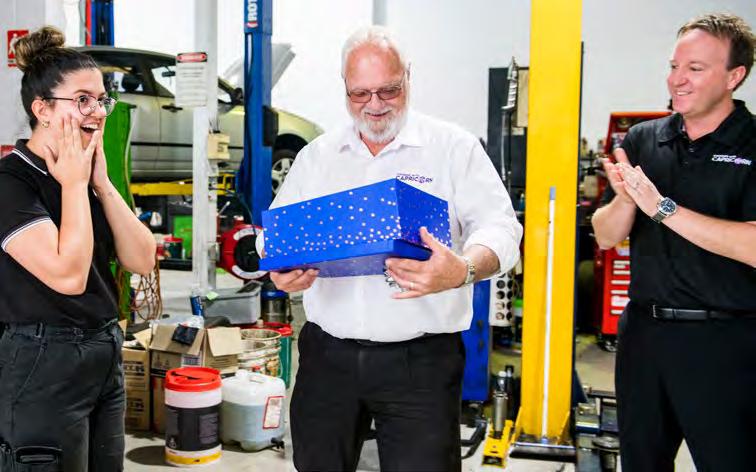
We are excited to announce the
“Gabby used to answer all the questions, and be the first one to put her hand up. She volunteered to do anything and really study what we’d learned the day before and come back with any questions she had about the work we were doing,” Chelsea said. “And I just thought, ‘Wow, there’s someone who’s really into their work and passionate’. We’ve kept in touch. She’s one of my mentors. I really look up to Gabby. I was so proud of her when she won the 2020 Capricorn Rising Stars award.”
Chelsea had been applying to the awards since 2020 and nearly didn’t apply this year, having been a finalist last year, until her employer, John Edwards, encouraged her to try again.
John said, "This is your last time to do it, just give it a go and see what happens’. Then, when I got it, I just felt like I’d made it. I’m absolutely chuffed.”
While the award settles into its new home on the shelf, Chelsea already has her eyes on the future and she and her partner have long-term ambitions to succeed John in the workshop.
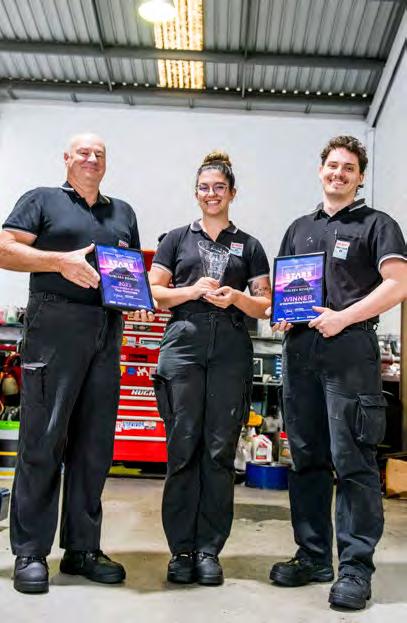
“My entry strategy and his exit strategy are to buy the business off him,” she said. “That’s my goal with my partner at the moment, just to carry on his legacy.”
In his nomination comments to Capricorn, John said, “Chelsea consistently proves to us that she is dedicated, hardworking and thoroughly passionate about the automotive industry. She takes initiative in finding and scheduling extracurricular training to broaden her knowledge base and improve her mechanical skills and understanding.”

Chelsea and her partner are already doing courses in business management and attending Bosch network events and council meetings to learn how to successfully run the business. Doubtless, the prizes she receives as a Rising Stars finalist and winner will help with that.
Chelsea’s now also sharing her passion with the next generation, attending career days at high schools to encourage young people especially girls, to consider automotive industry careers.
“I’d love to have my own apprentice or apprentices one day, and teach them in a really kind environment, like the one I had, so they thrive,” Chelsea said. “I hope one day my apprentice wins a Capricorn award too.”
What’s Chelsea’s advice to any apprentices considering entering next year’s Capricorn Rising Stars?

“Absolutely just go for it because I feel as though even just answering the questions, and even if you get into the finalist stage where you can talk more about your story, that is just as valuable as winning,” she said. “I found that even last year, the opportunities that I had from being in the Top 5 were huge for my pathway… Go for it!”
We’d like to take this opportunity to thank our incredible sponsors - Castrol, Repco, and The Workshop Whisperer – once again for their generous support and contributions which ensured that Chelsea, the Top 5 Finalists and their nominating workshops all received recognition and amazing prizes. Special thanks also to all the Members who took the time to nominate their exceptional apprentices and encouraged and supported them during the application process. We can’t wait to hear from next year’s crop of fantastically talented apprentices!
I feel like I’m a part of something that the younger me would have been really proud of.”

POWERED
ohhhhhh CAPRICORN IGNITION AUGUST 2023 21

n the race to replace the internal combustion engine, all the publicity and hype has been around battery electric vehicles. But there is another technology that’s challenging the ascent of the battery EVs: hydrogen power.
Hydrogen is an ideal fuel. It is the most abundant element in the universe. We can extract it from water—which is precisely where hydrogen cars get their energy.
Here’s the science at its most basic. In its molecular state, hydrogen is made up of two atoms bonded by an electron (to make water, just add an oxygen atom). By passing hydrogen molecules through a fuel cell (which takes water from the air) it’s possible to split the two atoms apart and release the energy in the electron to power whatever you need to power. In the case of today’s Future Ride, that means powering the Hyperion XP-1.
If we have to say goodbye to the internal combustion engine, then at least the Hyperion XP-1 looks like the future that Hollywood studios and video game designers have been promising us for years. It’s stunning.
Weighing in at just over 1000 kg, with a powertrain comprising hydrogen fuel cells and supercapacitors (instead of batteries), a threespeed transmission and four axial-flux electric motors, this hypercar has a range of 1635 km and a power output in excess of 1500 kW. It does zero to 100 km/h in 2.2 seconds and has a top speed of 356 km/h. It has a small battery, recharged using regenerative braking. Those aren’t just compelling promises; this is what Hyperion has already delivered. The XP-1 isn’t a concept car; you can go online, watch videos of the XP-1 in action, and pre-order yours now (although they’re only making 300 at the moment).

Hyperion’s background is in delivering hydrogen propulsion systems to NASA, various other space agencies, and engineering firms. Their stated goal in creating this sleek hypercar is to get people educated and excited about hydrogen—perhaps so when people think of hydrogen’s use in transportation, their minds aren’t immediately cast back to old newsreel footage of the Hindenberg disaster.
In an interview with Business Insider, Hyperion Chief Executive Officer Angelo Kafantaris said: “We needed to focus on a car, to tell the story in a compelling way to the consumer”.
What better way to do that than with a fast, sexy machine that’s quicker to 100 km/h than any model of Tesla, with twice the range and ticks a heap of other boxes, as well?
Which boxes, you may ask? We’ve already looked at performance, so let’s start with the design. The XP-1 looks cool. It has a carbon titanium monocoque structure, aluminium alloy suspension, a titaniumreinforced composite body, and a profile set to turn heads.
Then, there’s the hydrogen fuel cell technology that overcomes many of the problems that have been a stumbling block to the fast adoption of EVs. Hydrogen gas is very light, compared to heavy batteries, making the vehicles more energy efficient, and giving them a much longer range than EVs. There’s no need to spend three-quarters of an hour at an electric charge point, as the Hyperion XP-1 recharges in three to five minutes. Hydrogen gas doesn’t wear down or degrade. If Hyperion is to be believed, hydrogen is all upside.
Lastly, there’s the emissions. What comes out of the XP-1’s spectacularly futuristic exhaust? Nothing more than water and water vapour, the synthesised by-product of the hydrogen fuel cells.
Short of scientists discovering nuclear fusion, Kafantaris says hydrogen is the best fuel humanity can hope to use. Which is why his company—which, after all, is in the hydrogen business, not the vehicle manufacturing business—is now launching hydrogen refuelling stations all over the United States. The stations, which also have EV charging stations, are equipped to produce hydrogen onsite using water electrolysis. The plan is that if you make it easier for people to refuel, you remove a barrier to them buying a hydrogen (or electric) car.
Of course, not many of us can afford a hypercar like the XP-1. But the XP-1 is really more about the “hype” than the “car”. Many other vehicle manufacturers are playing with designs and releases of hydrogen models more suitable to your family’s daily commute. Hyperion is just selling us the sizzle. It could yet be the likes of Honda or Toyota who sell us the actual sausage. But who really knows what the future holds? Maybe the future is still battery EVs? If the future is hydrogen, however, it might just be the XP-1 that gets us there.




Are they already here?

For a while there, plenty of car manufacturers and tech companies were talking up the massive potential of driverless cars. Enterprises as diverse as Audi, Uber, Tesla, Apple and Google were investing fortunes in technology and trials. In 2017, the Brookings Institution said US$80 billion had been invested in developing driverless cars. The talk was of a US$7 trillion market for driverless cars.
Then, after all that fanfare, things went a bit quiet. So where are we at? What is the current state of autonomous vehicle technology and the potential market? And when can we expect to see driverless cars in Australia and New Zealand?

Different jurisdictions and manufacturers have slightly different definitions of what exactly constitutes an autonomous car but, in essence, it’s a vehicle that uses a combination of cameras, radars, sensors and artificial intelligence to travel from A to B without the need for a human driver. There are six different grades of autonomy, but a fully autonomous vehicle can navigate to a predetermined destination over ordinary roads without any human intervention. Tesla’s Autopilot, probably the best-known driverless tech, is only a level two. Its full self-driving capability is still in beta testing in the US (and has been for three years).
We’re a long way from the driverless utopia promised by the car and tech giants a few years ago but, nevertheless, the technology is already in commercial use in a few places. In the US, Google is operating a trial taxi-like service with its fully driverless Waymo cars, which operate using cameras, radar and LiDAR sensors, in San Francisco, California, and Phoenix, Arizona. According to reports, the Waymo cars have driven more than a million miles without a driver. The Arizona trial is the largest fully operational driverless service in the world. Closer to home, RAC WA and the Western Australian Government operated the trial of a level four autonomous electric bus in South Perth between September 2016 and June 2023. It was a hit with passengers, with four in five saying that they would be happy to ride in an automated vehicle, and 99% believing the technology could be used for public transport in the future.

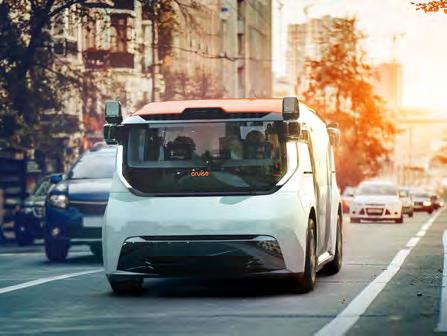
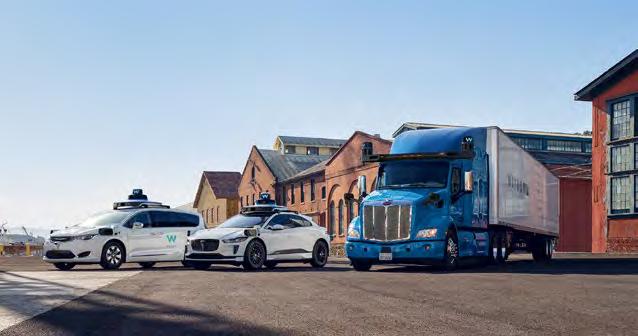


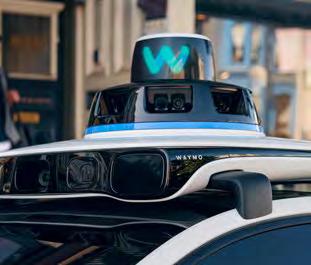
In popular culture, driverless cars have come in two chief varieties—cool or chaotic. KITT from Knight Rider was the former, Herbie the Love Bug was the latter. As a society, we loved them both. But in real life, we’ve been much less enthusiastic about strapping ourselves into a car that has a mind of its own. The reason? According to a survey by the Pew Research Center in the US in 2021, it’s trust. Almost two-thirds of respondents said they would not travel in a driverless vehicle and 45% said they didn’t want to share the road with driverless vehicles.
A Phoenix resident, David, used Waymo’s service for 90 days and said the technology was better than he expected it to be, and the ride was “easy, safe, comfortable”. When the car encountered an accident on the road he expected it to struggle but “it handled it perfectly, navigating around all of the obstacles and easily continuing on its way”
In San Francisco another driverless car startup, Cruise—which has received more than US$10 billion in funding from the likes of GM, Honda and Microsoft—has also driven more than a million autonomous miles. When Cruise benchmarked their driverless vehicle data against human drivers in a comparable driving environment, they found their vehicles were involved in 54% fewer collisions overall, 92% fewer collisions as the primary contributor and 73% fewer collisions with a meaningful risk of injury. In one million miles, there were only 36 collisions, 94% of which were caused by the behaviour of the other party involved. These accidents resulted in only one injury. That’s quite compelling data.


For all the reticence of some motorists to adopt driverless vehicles, there are places where automation of this kind has become an important part of life. Australia’s mining industry, for example, has adopted driverless vehicles at scale and found them to reduce costs, improve efficiency and productivity, improve safety and reduce the exposure of staff to hazardous conditions. Gina Rinehart’s Roy Hill mine in Western Australia already had 77 autonomous haul trucks and is now adding another 97 to the fleet. The company says this has been possible because they have continued to invest in and improve the tech.
But the open road is a very different environment to a mine site, and the public’s lack of trust in the technology remains. The introduction of driverless vehicles to our roads in Australia and New Zealand is being approached with caution. In Australia, transport authorities are developing regulations and guidelines they hope will be introduced by 2026. NZ authorities are taking an even more cautious approach. A report released late last year acknowledged the potential disruption of driverless vehicles, but questioned whether the technology would even take off.
There are, undoubtedly, still challenges to the widespread adoption of driverless cars. Although the outcomes have shown potential, there is an existing sense of distrust among customers due to the novelty of the technology. We like the idea of the cool KITT, but we’re worried we might end up with the slightly more chaotic Herbie or, worse still, Stephen King’s vehicle of terror, Christine.
Arguably, the recent rationalisation in investment by manufacturers suggests they aren’t sure the market is there for driverless vehicles just yet, either. But the developments we’ve seen to-date have already given us adaptive cruise control, parking assistance, lane-keeping assistance and automatic emergency braking. So, even if we’re still sitting in the driver’s seat for a few years to come, there’s little doubt technology that takes the human element out of driving will continue to play an increasing role in our driving experience.
At Capricorn Risk Services, we know how important your business is to you – and how essential it is to have the right risk protection when unexpected problems arise.






 by Paul Marinelli
by Paul Marinelli
The epic 24 Hours of Le Mans race is one of the top three in world motorsport. Together with the Indy 500 and the Monaco Grand Prix, these events form the triumvirate of motor races that every racing driver and car manufacturer on the planet dream of winning.

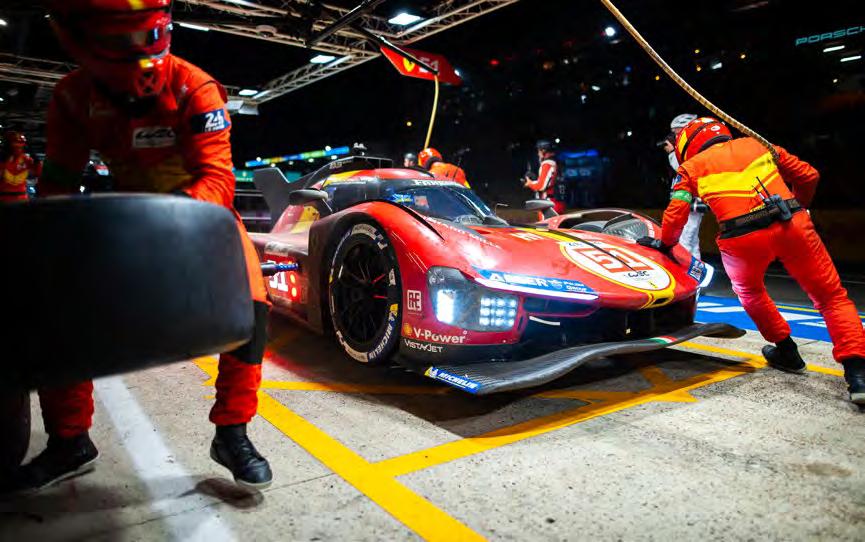


On 10 and 11 June 2023, the 24 Hours of Le Mans celebrated 100 years since the first race was run at the classic and super-fast La Sarthe circuit in France.
For the legendary Italian prancing horse team, Ferrari, their last 24 Hours of Le Mans victory was gained back in 1965, making it a long 58-year wait before Italian drivers Antonio Giovinazzi and Alessandro Pier Guidi and Briton James Calado took their outstanding victory in this year’s epic race. This fairytale victory of Ferrari winning the world’s toughest motor race was also the Italian manufacturer’s first appearance since 1973 in the top class at the 24 Hours of Le Mans race.
The scarlet-red team had everything thrown at them during the gruelling day, night and day race, including inclement weather, surviving a barrage of high-speed competitor accidents and even an electronics system episode that almost completely derailed their challenge. Emerging from the overnight stint, the race became a close battle between the Ferrari and the rival number 8 Toyota Hybrid Hypercar. A spin by Ryo Hirakawa caused front and rear damage to the Toyota, requiring a pit stop to fit new bodywork. This saw the Japanese Toyota factory driver rejoin the race, albeit a lap behind the Ferrari.
A bigger drama that had the whole nation of Italy biting their nails took place when Ferrari driver Pier Guidi found himself unable to restart the number 51 Hypercar after a routine refuel and tyre change pit stop, losing crucial seconds in the pits.

The team was joined by every Ferrari fan on the planet in a collective sigh of relief as Pier Guidi restarted the engine after about 30 seconds of resetting the electronic start sequence system. He had the honour of taking Ferrari to the 24H Le Mans chequered flag for the first time in almost six decades, crossing the 24-hour finish line one minute and 27 seconds ahead of Hirakawa, the ever-quick Kiwi Brendon Hartley, and fellow ex–Formula One driver Sebastien Buemi, from Switzerland.
This very special Ferrari victory saw Giovinazzi unable to control his emotions, with the former Formula One racer (and current Ferrari Formula One team Reserve Driver) becoming the first driver since Spanish superstar Fernando Alonso to win the 24H Le Mans race on his first attempt.


Legendary IndyCar and NASCAR team boss Chip Ganassi flew the American flag at 24H Le Mans with Cadillac Racing, clinching strong third- and fourth-place finishes with Alex Lynn, another Kiwi star, and former 24H Le Mans champion Earl Bamber and Richard Westbrook. They led the sister car of Renger van der Zande, French ace Sebastien Bourdais and yet another Kiwi star, Scott Dixon.
The Centenary 24 Hours of Le Mans saw three different car manufacturers take the major honours with Ferrari, Toyota and Cadillac on the podium. In another very successful 24H Le Mans effort for the Modena stable, the number 50 Ferrari 499P Hypercar, driven by Nicklas Nielsen, Antonio Fuoco and Miguel Molina, rounded out the overall top five.
This incredibly demanding endurance race saw many accidents during the first two hours and throughout the event, with a number of sad stories of teams dropping out due to failures or accidents while leading or running strongly in this classic World Endurance Championship race.
One of the biggest names in the field, Porsche Penske Motorsport, had a difficult race. The squad led the race but went on to suffer from a series of misfortunes, including a retirement for the number 75 Porsche 963 with a fuel pressure problem. The number 6 Porsche 963 crashed at the fittingly named Porsche Curves, with Frenchman Kevin Estre at the wheel, then suffered further time loss due to a battery problem. The team’s number 5 car was in contention for a top-five finish until a broken driveshaft in the race’s closing hour dropped the car to ninth.
Local hero car manufacturer Peugeot was an early race leader with their number 94 car but dropped out of podium contention when American racer Gustavo Menezes crashed in the middle of the night at the first Mulsanne chicane.
With qualifying and race speeds exceeding 340 kmh, the 24 Hours of Le Mans remains one of the world’s most incredible tests of man, team and machine, and the centenary edition in 2023 was no exception.

3 YEARS PREFERRED SUPPLIER
5iQ is a modern yet simple workshop management tool for every automotive mechanical workshop. They provide Software-as-a-Service (SaaS) platform that offers cloud-based apps that are intuitive, automated and suitable for all users.

From franchises to independent workshops and mobile technicians, businesses of all sizes trust 5iQ. Their platform includes built-in customer and technician apps that are all integrated into a single system. This seamless integration streamlines business operations and ensures a smooth workflow, so you can focus on providing exceptional service to your customers.
They are committed to user-friendly technology as they believe that even non-technical professionals should be able to leverage the power of digital tools. Their team at 5iQ consists of professionals with diverse backgrounds and experiences, which enables them to provide outstanding customer service.
fiiviq.com
1 YEAR PREFERRED SUPPLIER
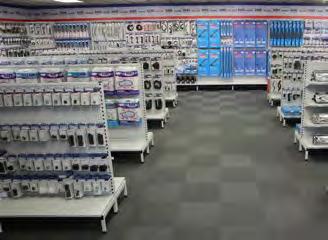
Quantum Blast is an Australian manufacturer of wet abrasive and vapour blast equipment. With a decade of experience, they provide high-quality products and consumables to various industries. As former blasters themselves, they understand your needs and deliver equipment that works. With a direct-to-customer approach, they ensure expert technical support and advice whenever you need it.

Their online store offers a wide range of hand-selected, durable and affordable products, from hoses to safety equipment and blast media. They provide 100% free support on all equipment and they also offer valuable resources to help contractors make informed decisions and even start their own businesses.
With six warehouses opened in the last six months, they can provide the reliable and cost-effective solutions needed to make your blasting projects a success.
quantumblast.com.au
27 YEARS PREFERRED SUPPLIER
Rare Spares, operating under RSP Automotive & Industrial, continues to thrive with the expansion of its company-owned store network. Owned and operated in Australia since 1974 they supply industrial rubber products, pressed metal products, information technology, clips and fasteners, automotive OEM products and are the Australasian distributor of Codan Hose.
With a team of over sixty experienced staff across their stores, Rare Spares emphasises quality, range, and service. They maintain long-term relationships with customers and staff. Their success lies in a customer focus, best-practice inventory management and commitment to timely delivery. The company continues to grow under the leadership of its directors and remains a trusted leader in the automotive industry.
rsp.net.au
5IQ (FIIVIQ) AUSTRALIA RSP INDUSTRIAL VIC/TAS, SA/NT BLAST AUSTRALIA SA/NT13 YEARS PREFERRED
Waverley Motor Group is a leading supplier of OEM parts for top automotive brands such as Mitsubishi, Nissan, Skoda, Volvo, Renault, Volkswagen, Holden and PPG Paint. With an extensive product range, competitive prices and knowledgeable staff, they make the hard look easy.
They’re committed to outstanding customer service, which has earned them a strong reputation in Melbourne. Whether it's panel or mechanical needs, their facility caters to all your automotive requirements. They offer daily metro deliveries and efficient overnight and interstate freight services. At their showrooms on Springvale Road in Mulgrave, you can explore a wide selection of new and used vehicles and a friendly reception from their team.
Whites Powersports was established in 1952 and is the trusted partner to the powersports market in Australia and New Zealand. Providing a comprehensive range of powersports products for motorcycles, ATVs, UTVs, and personal watercraft. Their extensive stock holding ensures prompt order fulfilment and can minimise downtime.
Their new Brisbane facility, equipped with state-of-the-art warehousing equipment, enhances their service levels across the Eastern seaboard. Combined with the Melbourne operation and 3PL partner in Perth, they offer high-quality service throughout Australia.

At Whites Powersports, they pride themselves on delivering quality powersports products coupled with outstanding customer service. They understand that the clients rely on them for prompt, accurate and efficient service and they strive to exceed their expectations at every turn.
waverleymotorgroup.com.au
whitespowersports2.com.au
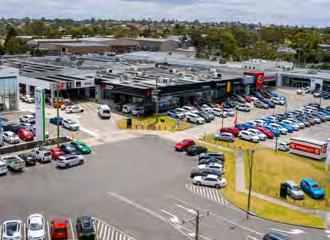 WAVERLEY MOTOR GROUP VIC/TAS
SUPPLIER
5 YEARS PREFERRED SUPPLIER
WAVERLEY MOTOR GROUP VIC/TAS
SUPPLIER
5 YEARS PREFERRED SUPPLIER
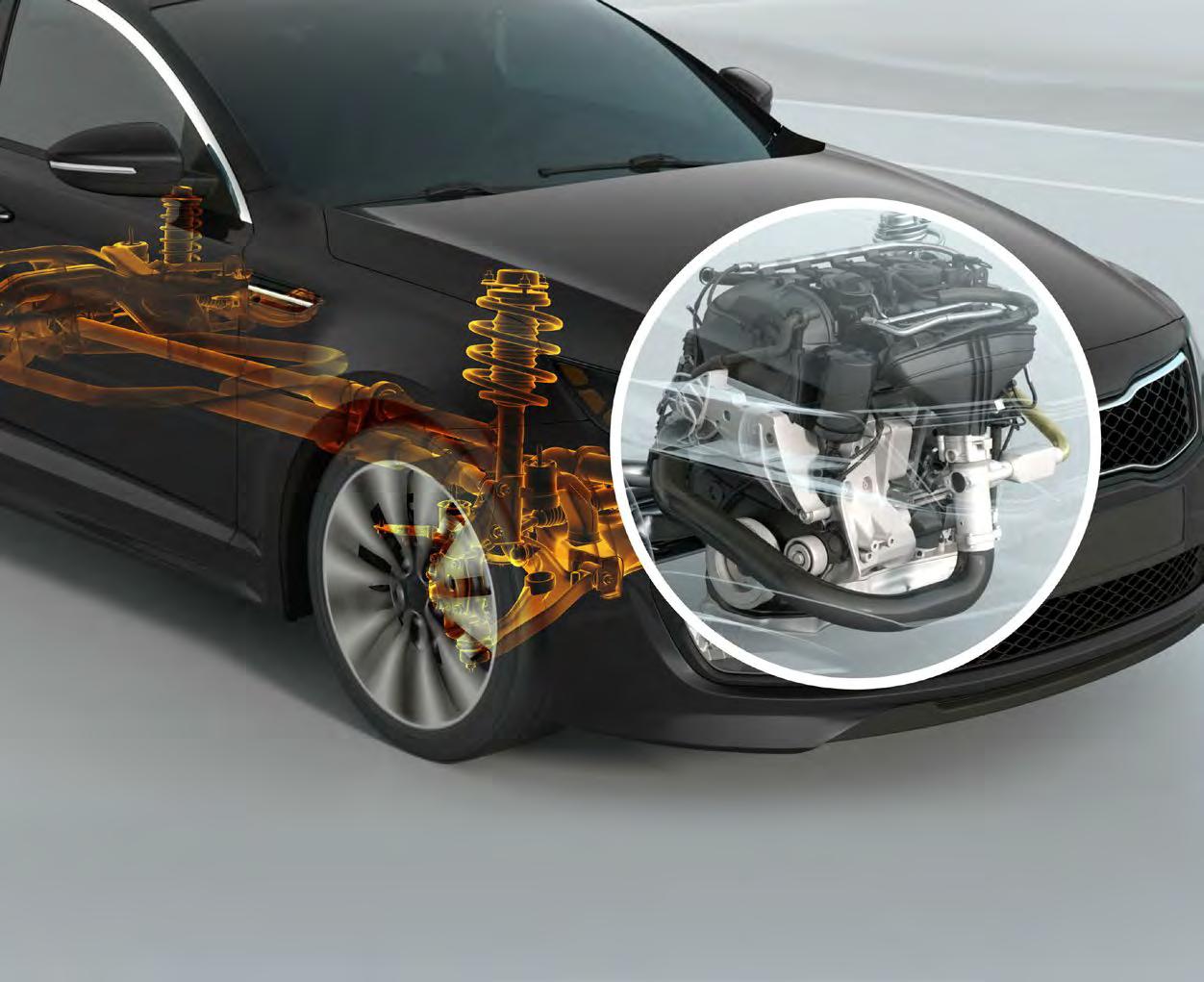

Email your entries to ignition@capricorn.coop before the 31 August 2023. Winners will be selected by a random draw of the correct Member entries occurring in West Perth on 1 September 2023. The winners’ names will be published in the October edition of Ignition. Please ensure you include your Member number and email address when submitting your entry.
June Winners
1st Prize - HI TECH AUTO SERVICE - 4,000 Bonus Rewards Points



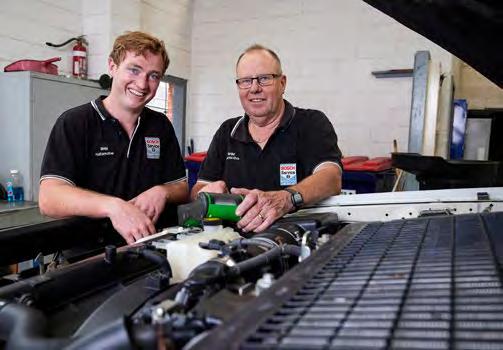
2nd Prize - CHRIS OBST PANEL AND PAINT - 2,000 Bonus Rewards Points
LAST MONTH’S ANSWERS
Find the 15 words hidden in the jumble. They could be horizontal, vertical, diagonal or backwards. See if you can find them all!
ACCOUNT
CAPRICORN DRIVERLESS ENGAGING EPIC
FEDERAL FUTURE
INDUSTRY
MANAGE PROACTIVE STARS SUCCESS TRADE WINNER WORKSHOP
